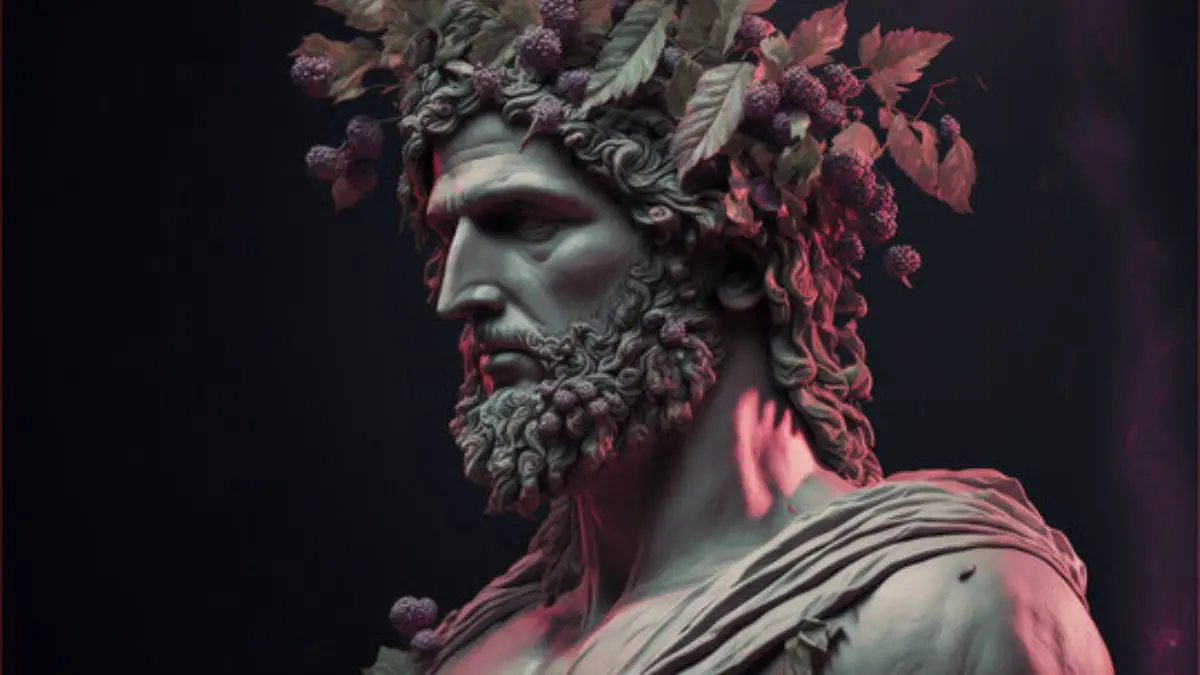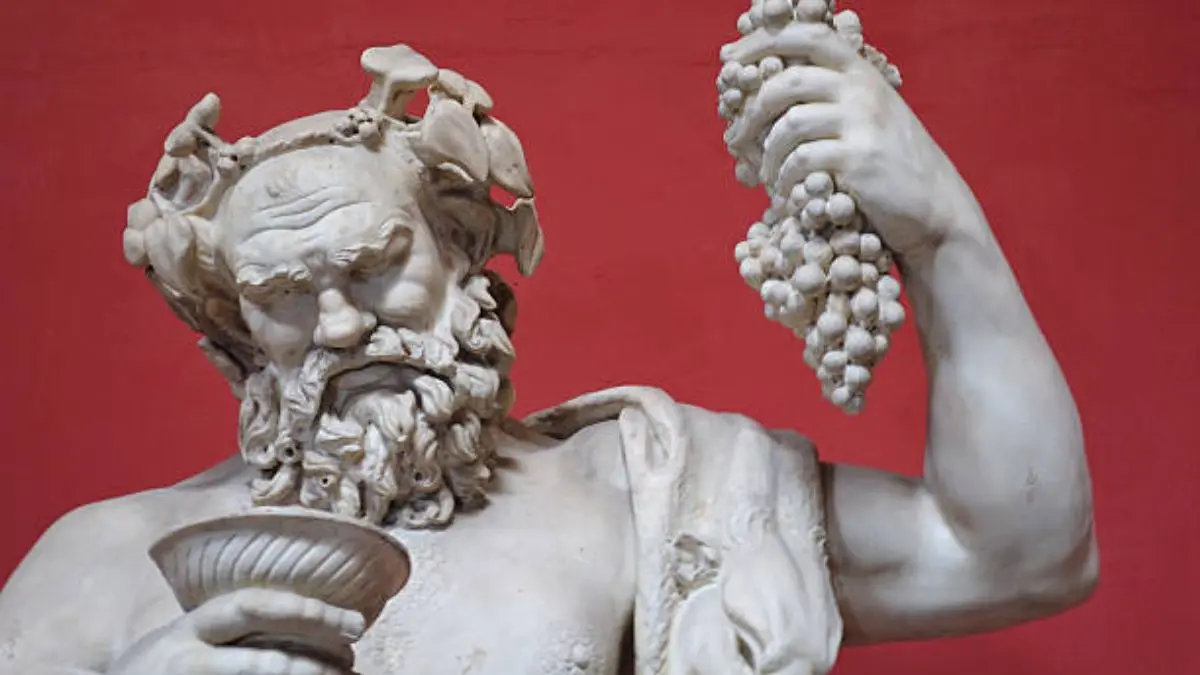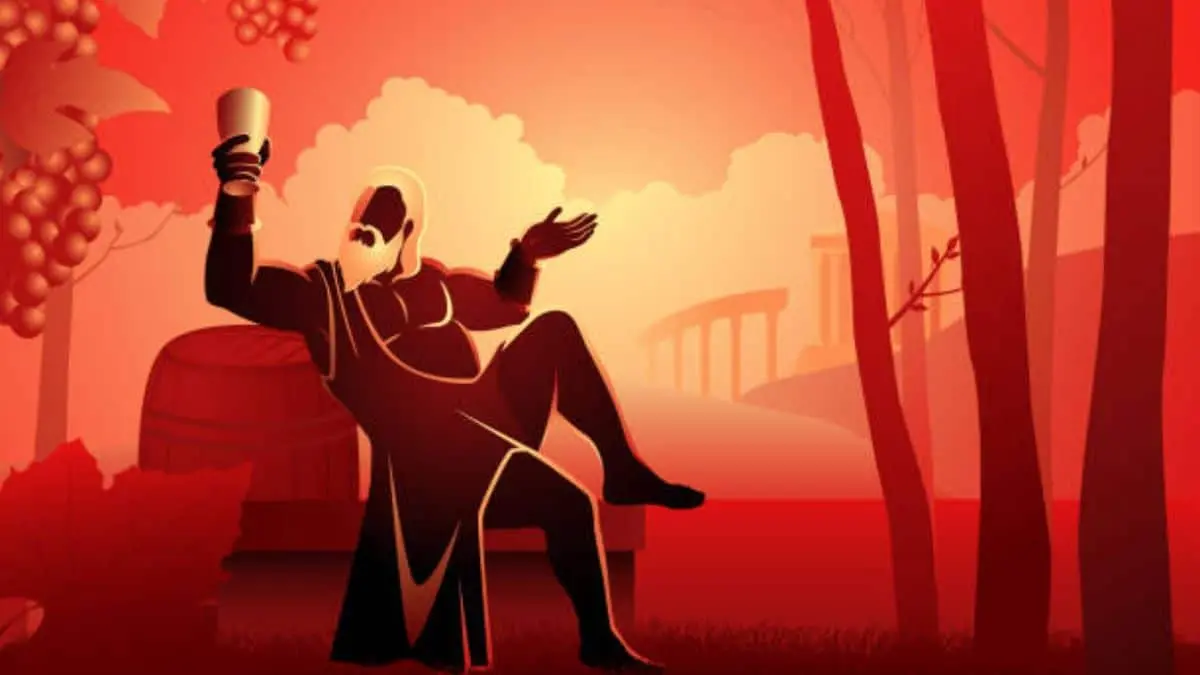Dionysus, one of the most intriguing deities in Greek mythology, is known as the god of wine, vegetation, fertility, festivity, ritual madness, religious ecstasy, and theatre. This multifaceted god holds a significant place in ancient Greek culture, embodying both the joyous and chaotic aspects of life. His story is rich with fascinating myths, complex relationships, and a profound impact on ancient Greek society.
Backstory of Dionysus
Dionysus, also known as Bacchus in Roman mythology, is the son of Zeus, the king of the gods, and Semele, a mortal woman. His birth story is one of the most extraordinary tales in Greek mythology. According to the myth, Zeus fell in love with Semele and visited her in secret. Hera, Zeus’s jealous wife, discovered the affair and, disguised as an old woman, tricked Semele into asking Zeus to reveal his true form. Bound by an oath, Zeus did so, but his divine form was too powerful for the mortal Semele, and she perished in the ensuing flames. Zeus managed to save the unborn Dionysus by sewing him into his thigh, from where he was later born, thus earning the epithet “twice-born.”
Dionysus was raised by nymphs and satyrs, away from Hera’s wrath. He grew up surrounded by nature, learning the secrets of vine cultivation and wine-making. His youth was marked by wanderings across the world, spreading the knowledge of viticulture and his cult. His followers, known as Maenads (or Bacchantes) and Satyrs, were often depicted in a state of ecstatic frenzy, celebrating the god with wild dances and rituals.

Lesser-Known Facts About Dionysus
- God of Theatre: Beyond his association with wine and festivity, Dionysus is also considered the patron god of theatre. The ancient Greek theatre festivals, known as Dionysia, were held in his honor, featuring dramatic competitions that included tragedies and comedies.
- Dual Nature: Dionysus’s nature is dual, embodying both life and death. While he is the god of life, fertility, and joy, he also has a darker aspect associated with madness, chaos, and death. This duality is reflected in the stories where he brings both ecstasy and destruction.
- Transformation and Shapeshifting: Dionysus was known for his ability to transform himself and others. In one myth, he turned a group of pirates into dolphins when they attempted to kidnap him. This ability to change forms signifies his control over the fluid and transformative nature of life.
- Myth of King Pentheus: One of the most famous myths involving Dionysus is that of King Pentheus of Thebes. Pentheus denied the divinity of Dionysus and banned his worship. In retaliation, he drove Pentheus mad, leading to his tragic death at the hands of the frenzied Maenads, including his own mother.
- Connection with the Underworld: Dionysus is also connected to the underworld. He is said to have descended into Hades to rescue his mother Semele, bringing her back to the realm of the gods and transforming her into the goddess Thyone.
Family Demography in Greek Mythology
Dionysus’s family in Greek mythology is vast and includes both divine and mortal relatives.
- Parents: Zeus (father) and Semele (mother).
- Stepmother: Hera, who is often portrayed as hostile towards Dionysus due to his origins.
- Spouse: Ariadne, the daughter of King Minos of Crete, whom Dionysus married after rescuing her from abandonment by Theseus.
- Children: Dionysus and Ariadne had several children, including Oenopion, Thoas, Staphylus, and others, who are less prominent in myths.
- Siblings: As the son of Zeus, Dionysus has numerous half-siblings, including well-known gods and goddesses such as Apollo, Artemis, Hermes, Athena, Ares, and Hephaestus.
| Person | Relationship | Details |
|---|---|---|
| Uranus | Great-grandfather | One of the primordial deities, god of the sky |
| Gaia | Great-grandmother | Primordial goddess of the Earth |
| Cronus | Grandfather | Titan, father of Zeus |
| Rhea | Grandmother | Titaness, mother of Zeus |
| Zeus | Father | King of the gods |
| Hera | Stepmother | Queen of the gods, often hostile towards Dionysus |
| Semele | Mother | Mortal woman, daughter of Cadmus and Harmonia |
| Cadmus | Maternal grandfather | Founder and first king of Thebes |
| Harmonia | Maternal grandmother | Goddess of harmony and concord, daughter of Ares and Aphrodite |
| Ariadne | Wife | Daughter of King Minos of Crete, rescued by Dionysus after being abandoned by Theseus |
| Oenopion | Son | Legendary king known for his association with wine |
| Thoas | Son | King of Lemnos |
| Staphylus | Son | Associated with grapes and wine |
Worship and Influence
The worship of Dionysus was widespread in ancient Greece, with numerous festivals dedicated to him. The most famous of these was the Dionysia, a major festival held in Athens that included dramatic competitions. The Lesser Dionysia, celebrated in rural areas, involved processions, sacrifices, and performances.
Dionysus’s influence extended beyond mere revelry. His cult represented a break from conventional societal norms, providing an outlet for the expression of hidden desires and emotions. The rituals often involved a temporary suspension of social order, allowing participants to experience a sense of divine madness and ecstasy.
The Bacchanalia, Roman festivals dedicated to Bacchus (Dionysus), were known for their wild and secretive nature. Initially, they were exclusive to women, but eventually, men were allowed to participate. These festivals became so infamous for their excesses that they were eventually banned by the Roman Senate in 186 BCE.

Dionysus in Art and Literature
Dionysus has been a popular subject in art and literature throughout history. Ancient Greek pottery often depicts scenes of Dionysian revelry, featuring the god with his thyrsus (a staff entwined with ivy and topped with a pine cone) and his entourage of Maenads and Satyrs. In literature, Euripides’ play “The Bacchae” is a seminal work that explores the dual nature of Dionysus and the consequences of denying his divinity.
In the Renaissance, Dionysus continued to inspire artists and writers. Painters like Caravaggio and Titian created iconic works depicting the god and his mythological tales. The themes of Dionysian ecstasy and the subversion of order have also influenced modern thinkers and writers, including Friedrich Nietzsche, who discussed the Apollonian and Dionysian dichotomy in his work “The Birth of Tragedy.”
Also Read: What Purpose does Mythology Serve?



